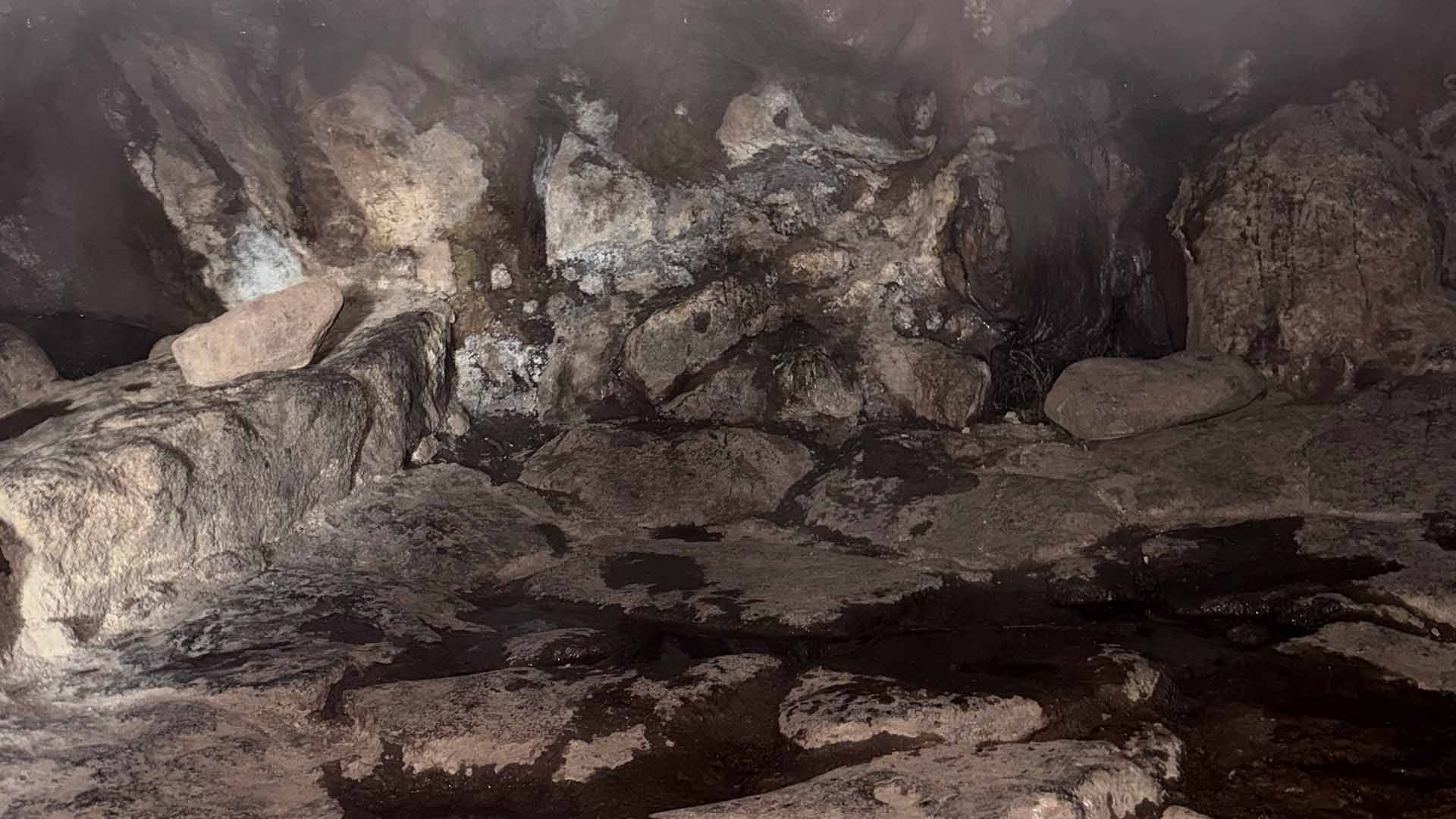Top Natural Wellness Spots in Pantelleria
Specchio di Venere.
A thermal lake inside a volcanic caldera -
Commonly known as the Venus Mirror, its official name is Lake Bagno dell’Acqua. It is the island’s only salt lake, fed by thermal springs along its southern shore. Located within a volcanic depression, the Caldera dei Cinque Denti, it contains gas-rich waters ranging from 34 to 58°C.
Its nearly circular shape (450 x 350 m) and seasonal variability make it a rare ecosystem and a biodiversity hotspot, home to rare plants like Limonium secundirameum, typical volcanic fauna, and migratory birds such as flamingos.
Grotta di Benikulà.
A natural sauna in the rock -
Also called Bagno Asciutto, this rock fissure emits thermal steam and lies hidden among the slopes of Sibà. A vivid example of secondary volcanism, it invites you to sit in the dimness, close your eyes, and sync your breath with the earth’s.
Inside, humidity condenses on the walls, and temperatures can reach up to 100°C, all naturally regulated. It’s an internationally recognized geosite for its geomorphological, hydrogeological, and volcanological value.
Favára Grande.
Where the earth breathes -
“Favára” is the local term for fumaroles: Cracks in the earth where geothermal heat escapes. On the southern slopes of Montagna Grande, steam jets rise from a living fault, reaching nearly 100°C. Once used by farmers to collect steam to water animals, today Favára Grande is a powerful testimony to the island’s geothermal energy and a site of scientific and geotourism interest.
The area is safe, but avoid lingering near emissions and prefer visiting on windy days.
Gadír Port.
Where the sea is warm -
Once a fishermen’s shelter, now a quiet seaside village housing rare wellness gems: natural thermal pools perfect for open-air relaxation, even in winter.
Nestled in the black rock, these waters reach 40–55°C. The name “Gadír,” from Arabic, means “pond” or “stream.” This coastal stretch is also an underwater archaeological site: two Roman shipwrecks dating from the 3rd to 1st centuries BCE, filled with Punic and Greco-Italic amphorae, lie just offshore.
Kuddìa di Mida.
A breathing volcano -
Adormant volcanic cone at 577 meters above sea level on the north slope of Montagna Grande. At its perfectly circular summit,active fumaroles vent steam and volcanic gases, with temperatures up to 100°C.
From here, views span the island: Venus Lake, coastal coves, cultivated inland stretches. Climbing Kuddia Mida is more than a hike, it’s an immersion in the living geology of the island.
Montagna Grande.
A summit grown over time -
I The island’s highest point at 836 meters. An ancient volcanic edifice now cloaked in vegetation, offering panoramic views. It’s the heart of the National Park’s trail network, traversed by routes showcasing Pantelleria’s nature, geology, and biodiversity.
Monte Gibele.
A former volcanic crater -
A significant volcanic cone in the island’s center.Younger than Montagna Grande, it’s the remnant of an extinct crater. Its gentle, rounded shape stands out in the landscape. From its trails, broad views of the inland and sea open up: a prime spot for observing Pantelleria’s volcanic morphology. Still geologically active, it lies on a fault line, contributing to the island’s slow evolution.

